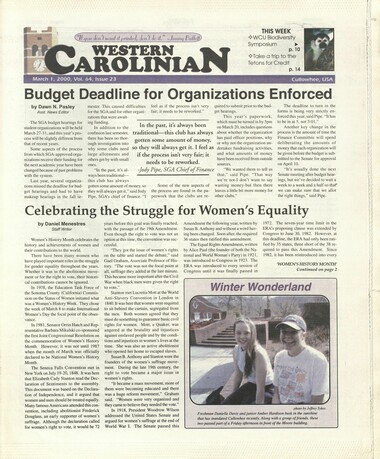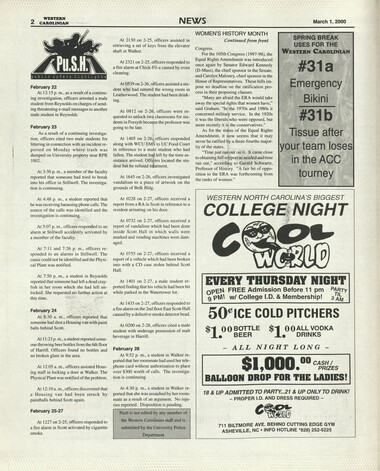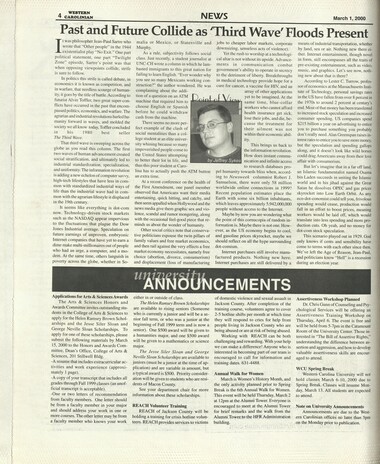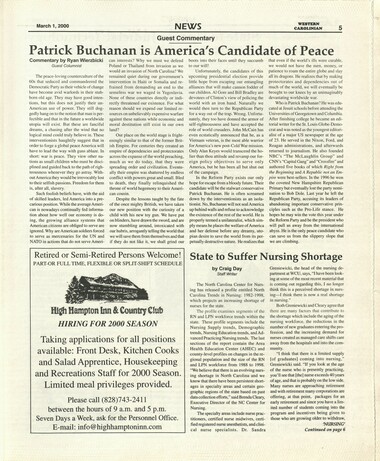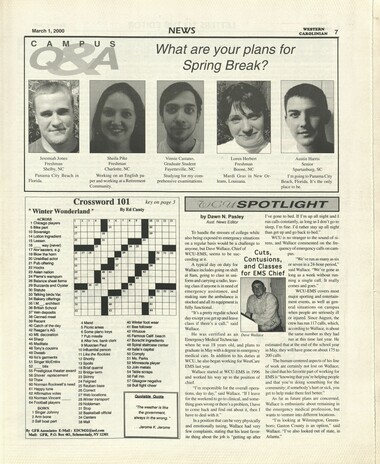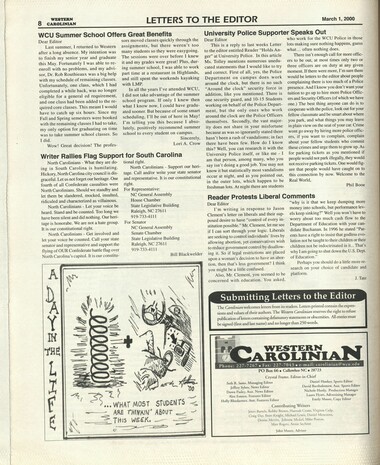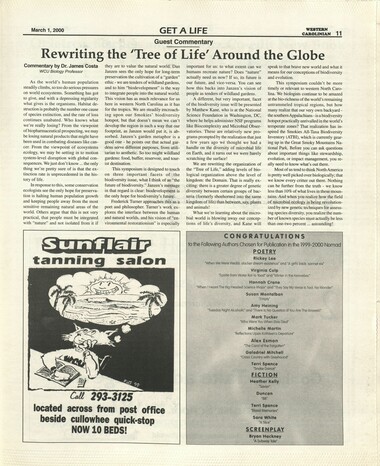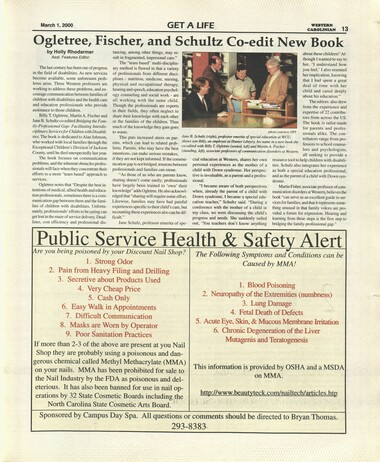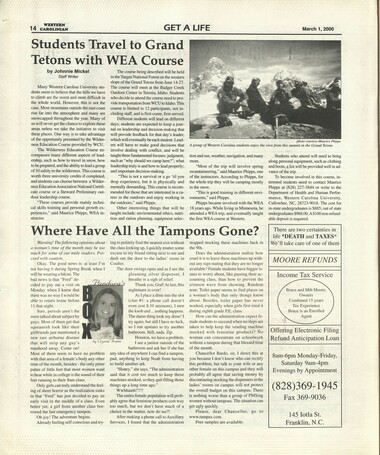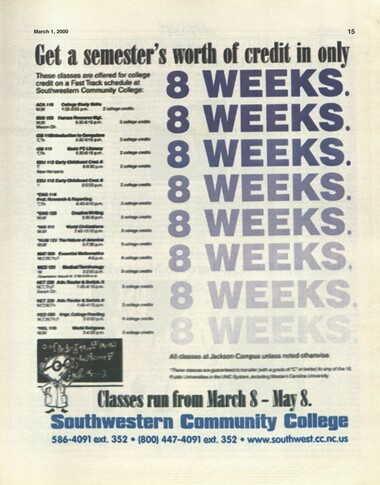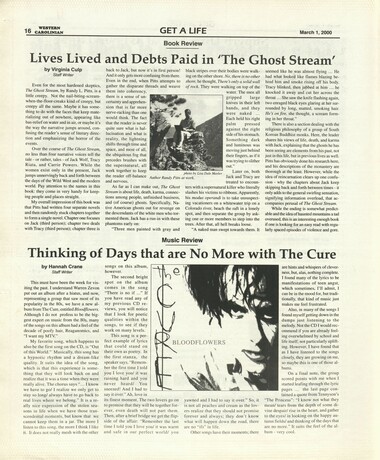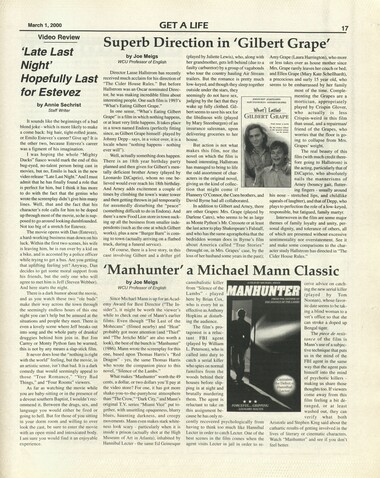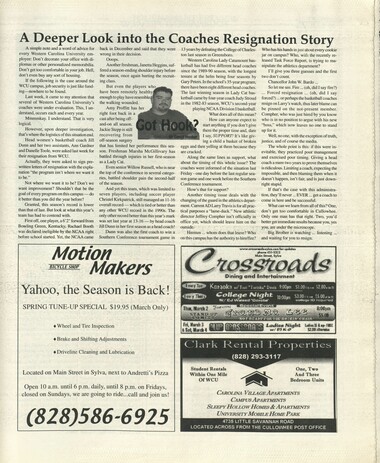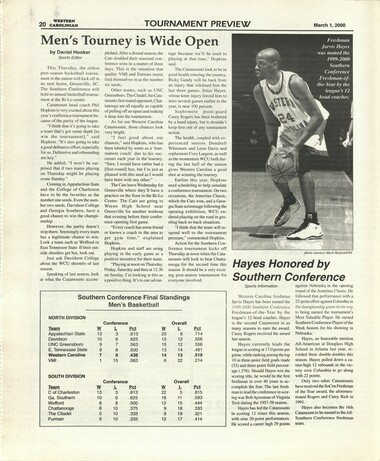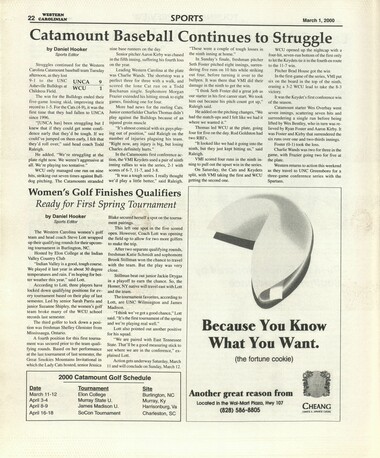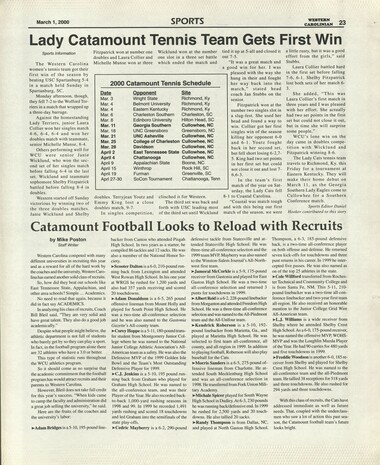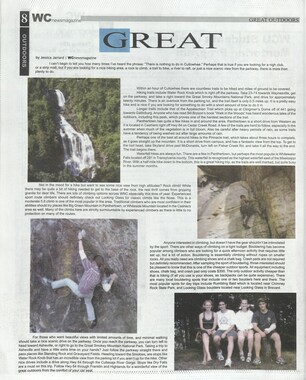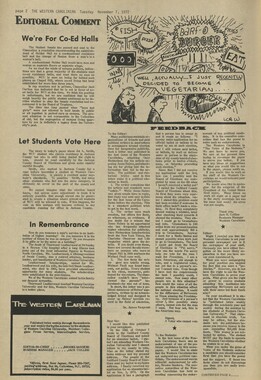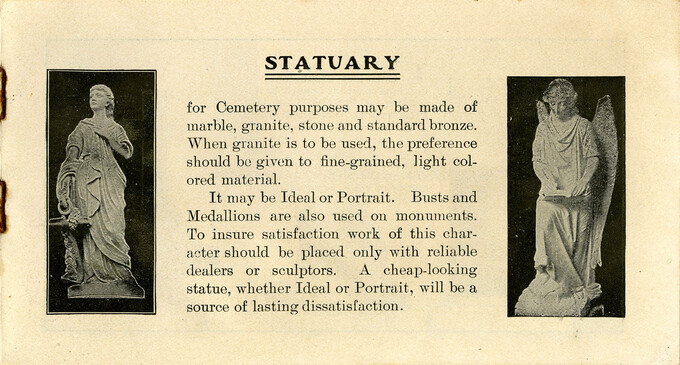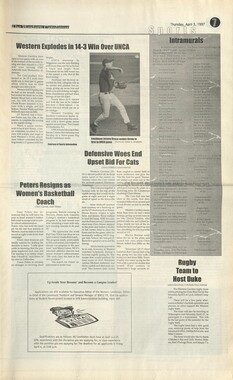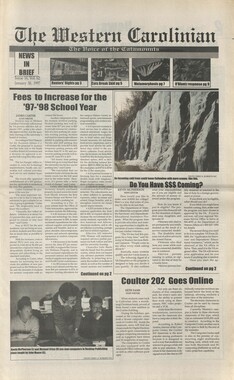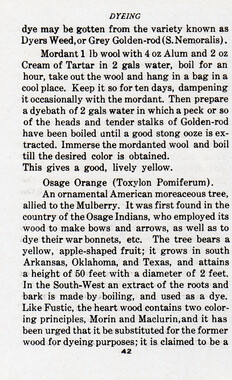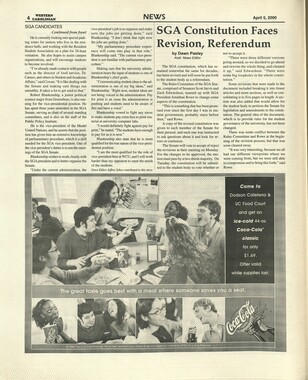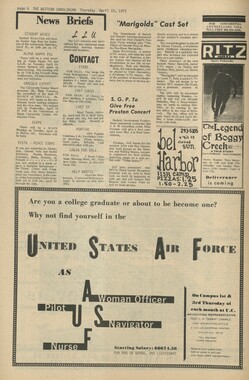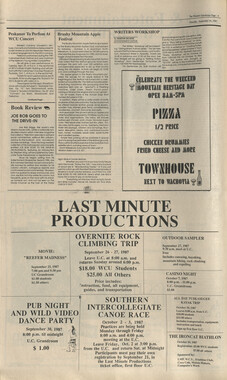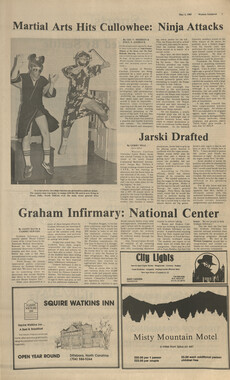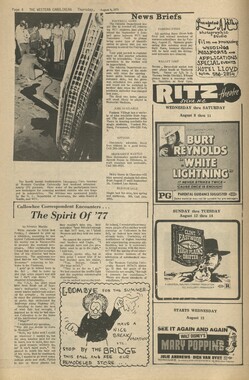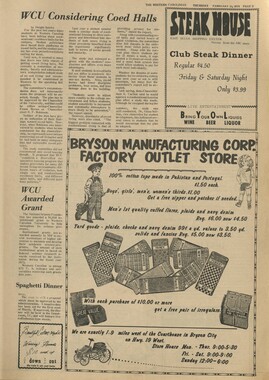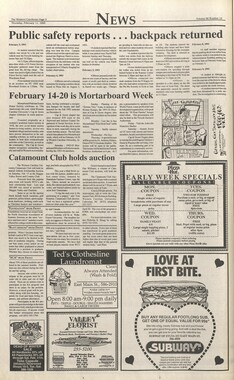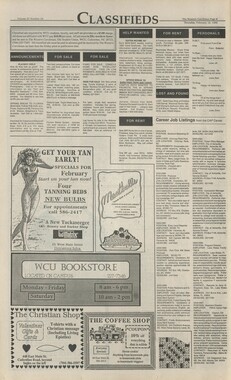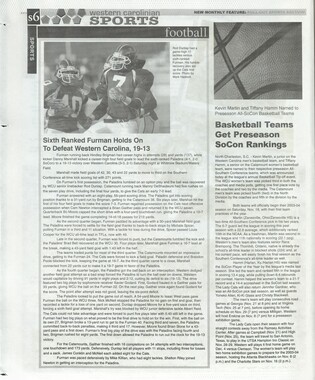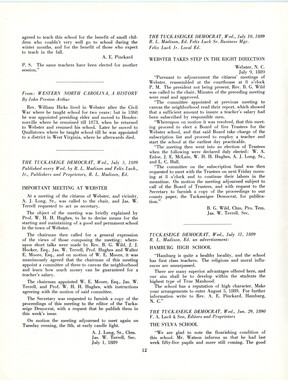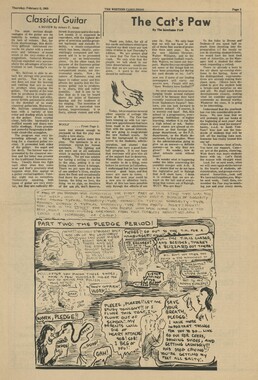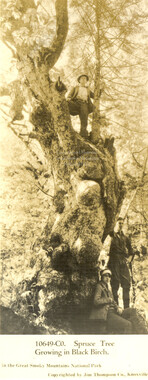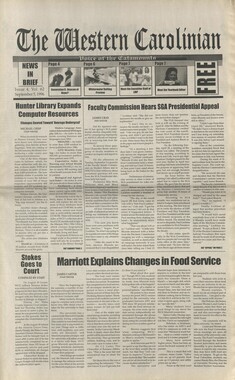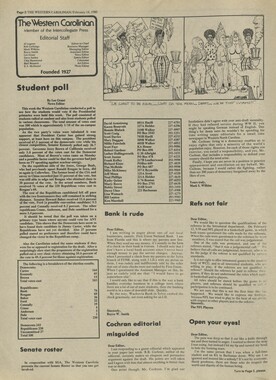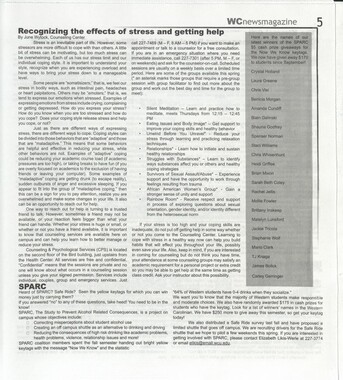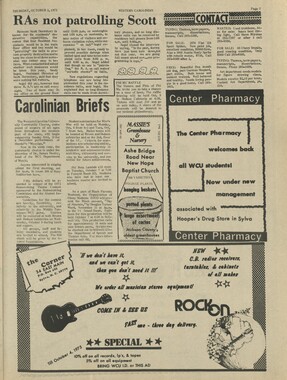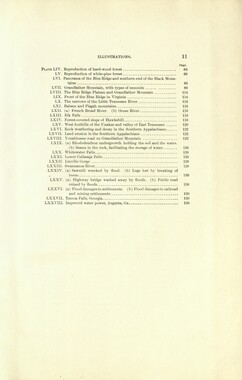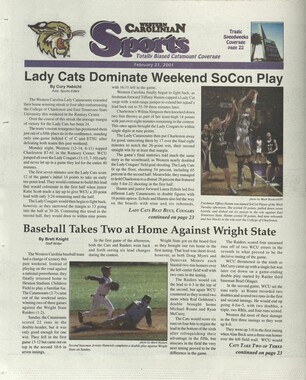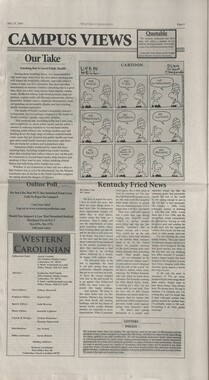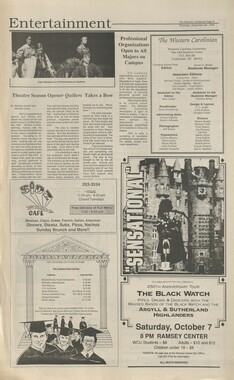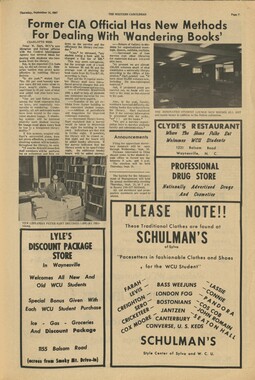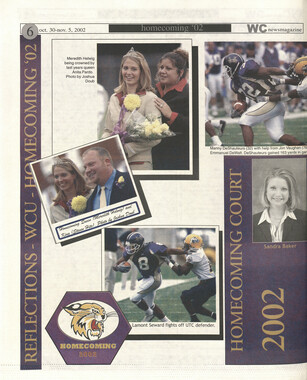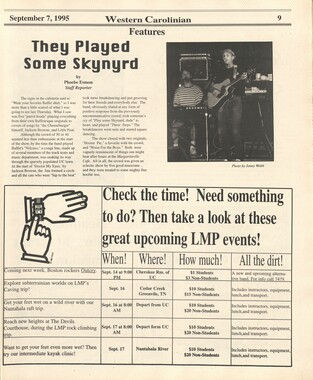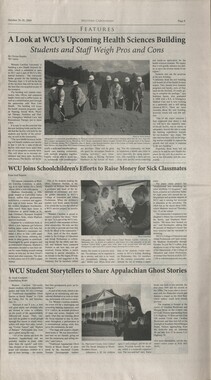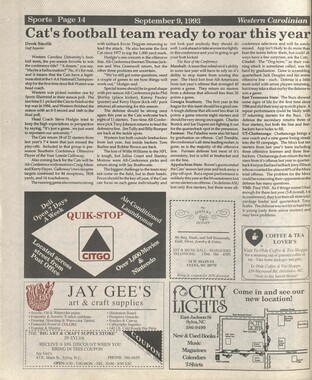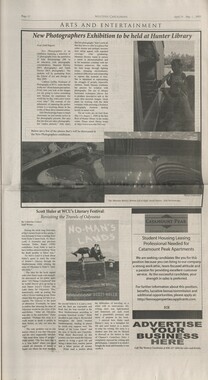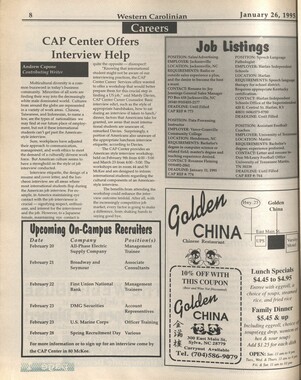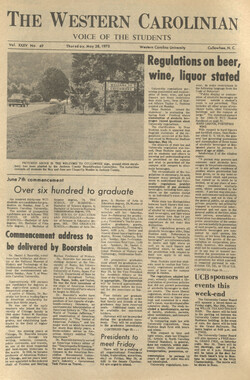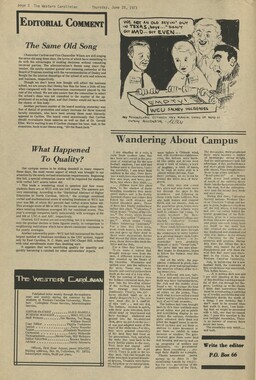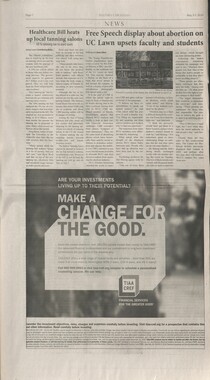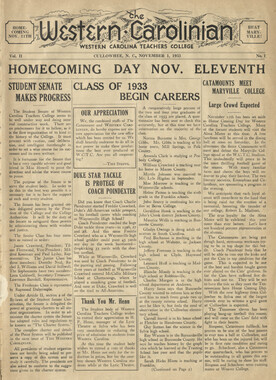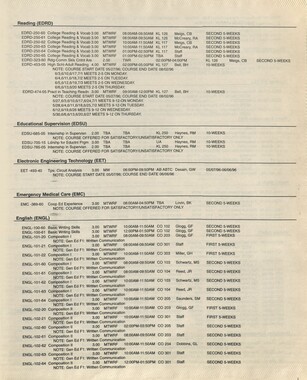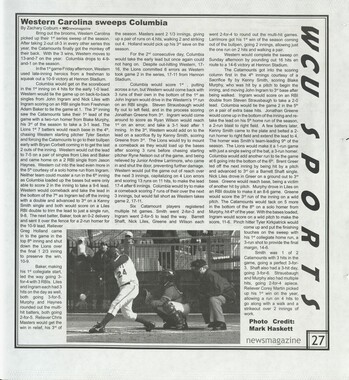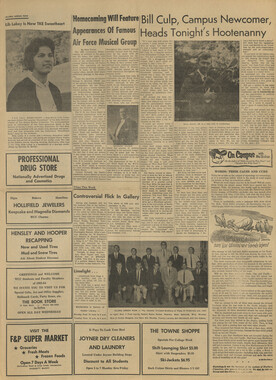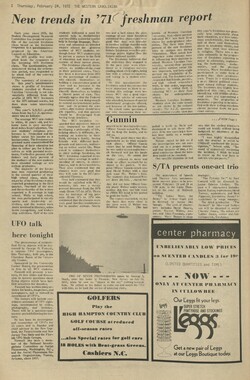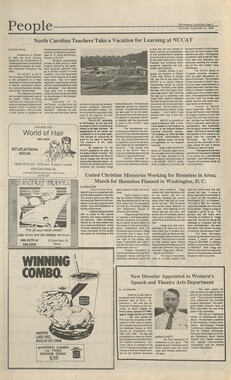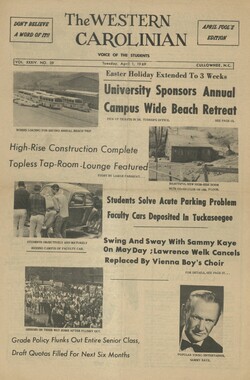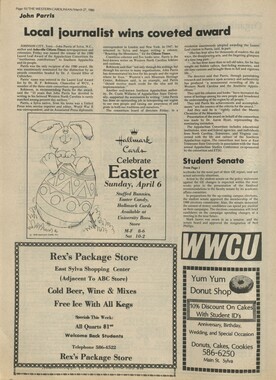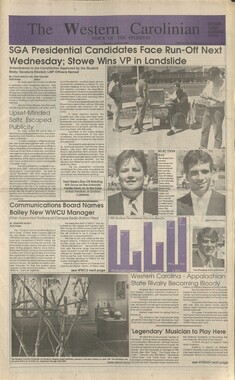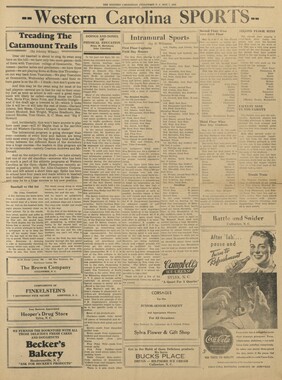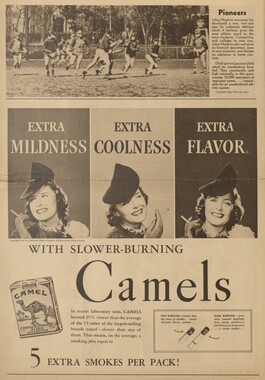Western Carolina University (20)
View all
- Canton Champion Fibre Company (2308)
- Cherokee Traditions (291)
- Civil War in Southern Appalachia (165)
- Craft Revival (1942)
- Great Smoky Mountains - A Park for America (2946)
- Highlights from Western Carolina University (430)
- Horace Kephart (941)
- Journeys Through Jackson (159)
- LGBTQIA+ Archive of Jackson County (85)
- Oral Histories of Western North Carolina (314)
- Picturing Appalachia (6798)
- Stories of Mountain Folk (413)
- Travel Western North Carolina (160)
- Western Carolina University Fine Art Museum Vitreograph Collection (129)
- Western Carolina University Herbarium (92)
- Western Carolina University: Making Memories (708)
- Western Carolina University Publications (2412)
- Western Carolina University Restricted Electronic Theses and Dissertations (146)
- Western North Carolina Regional Maps (71)
- World War II in Southern Appalachia (131)
University of North Carolina Asheville (6)
View all
- Allanstand Cottage Industries (62)
- Appalachian National Park Association (53)
- Bennett, Kelly, 1890-1974 (1388)
- Berry, Walter (76)
- Brasstown Carvers (40)
- Carver, George Washington, 1864?-1943 (26)
- Cathey, Joseph, 1803-1874 (1)
- Champion Fibre Company (233)
- Champion Paper and Fibre Company (297)
- Cherokee Indian Fair Association (16)
- Cherokee Language Program (22)
- Crowe, Amanda (40)
- Edmonston, Thomas Benton, 1842-1907 (7)
- Ensley, A. L. (Abraham Lincoln), 1865-1948 (275)
- Fromer, Irving Rhodes, 1913-1994 (70)
- George Butz (BFS 1907) (46)
- Goodrich, Frances Louisa (120)
- Grant, George Alexander, 1891-1964 (96)
- Heard, Marian Gladys (60)
- Kephart, Calvin, 1883-1969 (15)
- Kephart, Horace, 1862-1931 (313)
- Kephart, Laura, 1862-1954 (39)
- Laney, Gideon Thomas, 1889-1976 (439)
- Masa, George, 1881-1933 (61)
- McElhinney, William Julian, 1896-1953 (44)
- Niggli, Josephina, 1910-1983 (10)
- North Carolina Park Commission (105)
- Osborne, Kezia Stradley (9)
- Owens, Samuel Robert, 1918-1995 (11)
- Penland Weavers and Potters (36)
- Roberts, Vivienne (15)
- Roth, Albert, 1890-1974 (142)
- Schenck, Carl Alwin, 1868-1955 (1)
- Sherrill's Photography Studio (2565)
- Southern Highland Handicraft Guild (127)
- Southern Highlanders, Inc. (71)
- Stalcup, Jesse Bryson (46)
- Stearns, I. K. (213)
- Thompson, James Edward, 1880-1976 (226)
- United States. Indian Arts and Crafts Board (130)
- USFS (683)
- Vance, Zebulon Baird, 1830-1894 (1)
- Weaver, Zebulon, 1872-1948 (58)
- Western Carolina College (230)
- Western Carolina Teachers College (282)
- Western Carolina University (1899)
- Western Carolina University. Mountain Heritage Center (18)
- Whitman, Walt, 1819-1892 (10)
- Wilburn, Hiram Coleman, 1880-1967 (73)
- Williams, Isadora (3)
- Cain, Doreyl Ammons (0)
- Crittenden, Lorraine (0)
- Rhodes, Judy (0)
- Smith, Edward Clark (0)
- Appalachian Region, Southern (2569)
- Asheville (N.C.) (1923)
- Avery County (N.C.) (26)
- Blount County (Tenn.) (195)
- Buncombe County (N.C.) (1672)
- Cherokee County (N.C.) (283)
- Clay County (N.C.) (555)
- Graham County (N.C.) (233)
- Great Smoky Mountains National Park (N.C. and Tenn.) (519)
- Haywood County (N.C.) (3569)
- Henderson County (N.C.) (70)
- Jackson County (N.C.) (4804)
- Knox County (Tenn.) (35)
- Knoxville (Tenn.) (13)
- Lake Santeetlah (N.C.) (10)
- Macon County (N.C.) (420)
- Madison County (N.C.) (215)
- McDowell County (N.C.) (39)
- Mitchell County (N.C.) (132)
- Polk County (N.C.) (35)
- Qualla Boundary (981)
- Rutherford County (N.C.) (76)
- Swain County (N.C.) (2135)
- Transylvania County (N.C.) (270)
- Watauga County (N.C.) (12)
- Waynesville (N.C.) (86)
- Yancey County (N.C.) (72)
- Aerial Photographs (3)
- Aerial Views (60)
- Albums (books) (4)
- Articles (1)
- Artifacts (object Genre) (228)
- Bibliographies (1)
- Biography (general Genre) (2)
- Cards (information Artifacts) (38)
- Clippings (information Artifacts) (191)
- Copybooks (instructional Materials) (3)
- Crafts (art Genres) (622)
- Depictions (visual Works) (21)
- Design Drawings (1)
- Drawings (visual Works) (185)
- Envelopes (73)
- Exhibitions (events) (1)
- Facsimiles (reproductions) (1)
- Fiction (general Genre) (4)
- Financial Records (12)
- Fliers (printed Matter) (67)
- Glass Plate Negatives (381)
- Guidebooks (2)
- Internegatives (10)
- Interviews (815)
- Land Surveys (102)
- Letters (correspondence) (1013)
- Manuscripts (documents) (618)
- Maps (documents) (177)
- Memorandums (25)
- Minutes (administrative Records) (59)
- Negatives (photographs) (6015)
- Newsletters (1290)
- Newspapers (2)
- Notebooks (8)
- Occupation Currency (1)
- Paintings (visual Works) (1)
- Pen And Ink Drawings (1)
- Periodicals (193)
- Personal Narratives (10)
- Photographs (12976)
- Plans (maps) (1)
- Poetry (5)
- Portraits (4539)
- Postcards (329)
- Programs (documents) (151)
- Publications (documents) (2364)
- Questionnaires (65)
- Relief Prints (26)
- Sayings (literary Genre) (1)
- Scrapbooks (282)
- Sheet Music (2)
- Slides (photographs) (402)
- Songs (musical Compositions) (2)
- Sound Recordings (796)
- Specimens (92)
- Speeches (documents) (15)
- Tintypes (photographs) (8)
- Transcripts (322)
- Video Recordings (physical Artifacts) (23)
- Text Messages (0)
- A.L. Ensley Collection (275)
- Appalachian Industrial School Records (7)
- Appalachian National Park Association Records (336)
- Axley-Meroney Collection (2)
- Bayard Wootten Photograph Collection (20)
- Bethel Rural Community Organization Collection (7)
- Blumer Collection (5)
- C.W. Slagle Collection (20)
- Canton Area Historical Museum (2110)
- Carlos C. Campbell Collection (462)
- Cataloochee History Project (64)
- Cherokee Studies Collection (4)
- Daisy Dame Photograph Album (5)
- Daniel Boone VI Collection (1)
- Doris Ulmann Photograph Collection (112)
- Elizabeth H. Lasley Collection (1)
- Elizabeth Woolworth Szold Fleharty Collection (4)
- Frank Fry Collection (95)
- George Masa Collection (173)
- Gideon Laney Collection (452)
- Hazel Scarborough Collection (2)
- Hiram C. Wilburn Papers (28)
- Historic Photographs Collection (236)
- Horace Kephart Collection (861)
- Humbard Collection (33)
- Hunter and Weaver Families Collection (1)
- I. D. Blumenthal Collection (4)
- Isadora Williams Collection (4)
- Jesse Bryson Stalcup Collection (47)
- Jim Thompson Collection (224)
- John B. Battle Collection (7)
- John C. Campbell Folk School Records (80)
- John Parris Collection (6)
- Judaculla Rock project (2)
- Kelly Bennett Collection (1407)
- Love Family Papers (11)
- Major Wiley Parris Civil War Letters (3)
- Map Collection (12)
- McFee-Misemer Civil War Letters (34)
- Mountain Heritage Center Collection (4)
- Norburn - Robertson - Thomson Families Collection (44)
- Pauline Hood Collection (7)
- Pre-Guild Collection (2)
- Qualla Arts and Crafts Mutual Collection (12)
- R.A. Romanes Collection (681)
- Rosser H. Taylor Collection (1)
- Samuel Robert Owens Collection (94)
- Sara Madison Collection (144)
- Sherrill Studio Photo Collection (2558)
- Smoky Mountains Hiking Club Collection (616)
- Stories of Mountain Folk - Radio Programs (374)
- The Reporter, Western Carolina University (510)
- Venoy and Elizabeth Reed Collection (16)
- WCU Gender and Sexuality Oral History Project (32)
- WCU Mountain Heritage Center Oral Histories (25)
- WCU Oral History Collection - Mountain People, Mountain Lives (71)
- WCU Students Newspapers Collection (1843)
- Western North Carolina Tomorrow Black Oral History Project (69)
- William Williams Stringfield Collection (2)
- Zebulon Weaver Collection (109)
- African Americans (390)
- Appalachian Trail (35)
- Artisans (521)
- Cherokee art (84)
- Cherokee artists -- North Carolina (10)
- Cherokee language (21)
- Cherokee pottery (101)
- Cherokee women (208)
- Church buildings (172)
- Civilian Conservation Corps (U.S.) (111)
- College student newspapers and periodicals (1933)
- Dams (107)
- Dance (1023)
- Education (222)
- Floods (61)
- Folk music (1015)
- Forced removal, 1813-1903 (2)
- Forest conservation (220)
- Forests and forestry (1184)
- Gender nonconformity (4)
- Great Smoky Mountains National Park (N.C. and Tenn.) (181)
- Hunting (45)
- Landscape photography (25)
- Logging (119)
- Maps (83)
- Mines and mineral resources (8)
- North Carolina -- Maps (18)
- Paper industry (38)
- Postcards (255)
- Pottery (135)
- Railroad trains (72)
- Rural electrification -- North Carolina, Western (3)
- School integration -- Southern States (2)
- Segregation -- North Carolina, Western (5)
- Slavery (5)
- Sports (452)
- Storytelling (243)
- Waterfalls -- Great Smoky Mountains (N.C. and Tenn.) (66)
- Weaving -- Appalachian Region, Southern (280)
- Wood-carving -- Appalachian Region, Southern (328)
- World War, 1939-1945 (173)
Western Carolinian Volume 64 (65) Number 23
Item
Item’s are ‘child’ level descriptions to ‘parent’ objects, (e.g. one page of a whole book).
-
-
I \Jttpu don i want it prinkxl, don f do if. -Jimmy Buffe]}) I WESTERN <^T aroliniaN THIS WEEK ^WCU Biodiversity Symposium ► p. 10 -<Hdke a trip to the Tetons for Credit p. 14 March 1, 2000, Vol. 64, Issue 23 Cullowhee, USA Budget Deadline for Organizations Enforced by Dawn N. Pasley Asst. News Editor The SGA budget hearings for student organizations will be held March 27-31, and this year's process will be slightly different from that of recent years. Some aspects of the process from which SGA-approved organizations receive their funding for the next academic year have been changed because of past problems with the system. Last year, several organizations missed the deadline for budget hearings and had to have makeup hearings in the fall se- feel as if the process isn't very fair; it needs to be reworked." quired to submit prior to the budget hearings. This year's paperwork, which must be turned in by 5pm on March 20, includes questions mester. This caused difficulties for the SGA and for other organizations that were awaiting funding. In addition to the confusion last semester, there has been no thor- ... ii«jn.cii auiiit dinuuui «ji nnjiicy, ough investigation into ... . or why not the organization un why some clubs need SO they will always get it. I feel as dertakes fundraising activities, large allotments and if the process isn't very fair; it ancl w'iat amounts °f money needs to be reworked. In the past, it's always been traditional this club has always about whether the organization ~~*«.«., „~,~-^ „..„* „£ ,»,„.,„ nas Pa'd officer positions, why gotten some amount or money, others get by with small ones. "In the past, it's always been traditional— this club has always gotten some amount of money, so they will always get it," said Jody Pipe, SGA's chief of finance. "I -Jody Pipe, SGA Chief of Finance Some of the new aspects of the process are found in the paperwork that the clubs are re- have been received from outside sources. "We wanted them to tell us that," said Pipe. "That way we're not-I don't want to say wasting money-but then there leaves a little bit more money for other clubs." The deadline to turn in the forms is being very strictly enforced this year, said Pipe. "It has to be in at 5, not 5:01." Another key change in the process is the amount of time the Finance Committee will spend deliberating the amounts of money that each organization will be given before the budget is submitted to the Senate for approval on April 10. "It's usually done the next Senate meeting after budget hearings, but we've decided to wait a week to a week and a half so that" we can make sure that we allot the right things," said Pipe. Celebrating the Struggle for Women's Equality by Daniel Menestres Staff Writer Women's History Month celebrates the history and achievements of women and their contributions to the world. There have been many women who have played important roles in the struggle for gender equality throughout the years. Whether it was in the abolitionist movement or for the right to vote, their historical contributions cannot be ignored. In 1978, the Education Task Force of the Sonoma County (California) Commission on the Status of Women initiated what was a Women's History Week. They chose the week of March 8 to make International Women's Day the focal point of the observance. In 1981, Senator Orrin Hatch and Representative Barbara Mikulski co-sponsored the first Joint Congressional Resolution on the commemoration of Women's History Month. However, it was not until 1987 when the month of March was officially declared to be National Women's History Month. The Seneca Falls Convention met in New York on July 19-20, 1848. It was here that Elizabeth Cady Stanton read the Declaration of Sentiments to the assembly. This document was based on the Declaration of Independence, and it argued that women and men should be treated equally. Many famous Americans attended this convention, including abolitionist Frederick Douglass, an early supporter of women's suffrage. Although the declaration called for women's right to vote, it would be 72 years before this goal was finally reached, with the passage of the 19th Amendment. Even though the right to vote was not an option at this time, the convention was successful. "They got the issue of women's rights on the table and started the debate," said Gael Graham, Associate Professor of History. "The vote was not the focal point at all, suffrage they added at the last minute. This became more important after the Civil War when black men were given the right to vote." Stanton met Lucretia Mott at the World Anti-Slavery Convention in London in 1840. It was here that women were required to sit behind the curtain, segregated from the men. Both women agreed that they must do something to guarantee basic civil rights for women. Mott, a Quaker, was angered at the brutality and injustices against enslaved people and by the conditions and injustices in women's lives at the time. She was also an active abolitionist who opened her home to escaped slaves. Susan B. Anthony and Stanton were the founders of the women's suffrage movement. During the late 19th century, the right to vote became a major issue in women's rights. "It became a mass movement, more of them were becoming educated and there was a huge reform movement," Graham said. "Women were very organized and they came to believe they needed the vote." In 1918, President Woodrow Wilson addressed the United States Senate and argued for women's suffrage at the end of World War I. The Senate passed this Amendment the following year, written by Susan B. Anthony and without a word having been changed. Soon after, the required 36 states then ratified this amendment. The Equal Rights Amendment, written by Alice Paul (the founder of both the National and World Woman's Party) in 1921, was introduced to Congress in 1923. The ERA was introduced to every session of Congress until it was finally passed in 1972. The seven-year time limit in the ERA's proposing clause was extended by Congress to June 30, 1982. However, at this deadline, the ERA had only been ratified by 35 states, three short of the 38 required to pass this Amendment. Since 1982, it has been reintroduced into every WOMEN'S HISTORY MONTH' Continued on page 2 Winter Wonderland photo by Jeffrey Sykes Freshman Danielle Davis and junior Amber Hardison bask in the sunshine that has inundated Cullowhee recently. Along with a group of friends, these two passed part of a Friday afternoon in front of the Moore building. !h m 1 if'
Object
Object’s are ‘parent’ level descriptions to ‘children’ items, (e.g. a book with pages).
-
The Western Carolinian is Western Carolina University's student-run newspaper. The paper was published as the Cullowhee Yodel from 1924 to 1931 before changing its name to The Western Carolinian in 1933.
-
